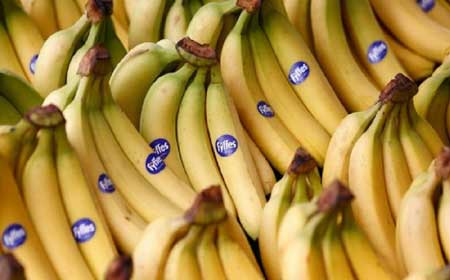BELIZE CITY, Thurs. June 29, 2017–Belize experienced a recession in 2016, but indications are that the economy is on the rebound, with first quarter growth of 2.1%, according to latest figures announced by the Statistical Institute of Belize (SIB).
Jefte Ochaeta, Statistician I of the SIB’s Economic Statistics Department, told the media on Wednesday that agricultural expansion—primarily from the banana and sugar sectors—accounted for most of the growth reported for the period January to May 2017.
The 2.1% increase in Belize’s Gross Domestic Product (GDP) can be attributed to the agriculture sector, said Ochaeta, adding that agriculture alone contributed 1.6% to the numbers, with banana production actually making the highest contribution to the increase for that period.
However, the performance in the sugar sector, both in the primary industries (reflecting increased sugar cane deliveries to the Tower Hill Factor in Orange Walk) and in the secondary industries (reflecting conversion of cane to sugar), had improved over the previous year; however, the more notable increase was in sugar production, up by over a third (or 33%) because the delivery of better quality cane, preserved partially by good weather over northern Belize during the crop period, meant that more sugar could be extracted from each ton of cane and there was less mud content to complicate matters at the factory.
Ochaeta explained that sugarcane deliveries were up 6.7%, due to the return of a major farm to production. There was also a more significant increase of sugar extracted from sugar cane, the statistician said.
A bulletin released by the SIB said that the total value of goods and services produced in Belize during the first quarter of 2017 was $748.2 million, up $15.4 million from $732.8 in the first quarter of 2016. Ochaeta notes that this is a record for first quarter production in Belize.
According to the SIB, “The banana industry grew by more than 34 percent, this strong performance marking its recovery from the lingering effects of Hurricane Earl and the closure of one of the major farms in late 2015.”
The SIB added that sugarcane deliveries also recorded an increase, as the industry continued to expand into the western part of the country, with production by Santander.
Another notable rebound was in fisheries, led by an expansion in marine production by 11.5% over the first quarter of last year.
The only major agricultural commodity yet to rebound is citrus, as production on that front plummeted due to a fall in citrus fruit deliveries by about 14%. Ochaeta noted that this was due to aging fruit trees, adverse weather conditions and the effects of citrus greening.
Another major income earner for Belize, tourism, which falls under the tertiary sector of the economy, saw some mixed results. Ochaeta pointed out that although Belize reported a 7.5% increase in cruise tourist arrivals and a 2.7% increase in overnight stays, it appears that stay-over tourists are opting out of staying at established hotels, as hotel occupancy rates fell by about 5%. It was suggested that tourists may be opting for budget accommodation services.
As for merchandise trade, Belize’s imports were down while exports were up for the first five months of the year. Belize’s main agricultural sectors also contributed significantly to export earnings. Tiffany Vasquez – Statistician II, Economic Statistics Department at the SIB, told the press that while imports, which triple exports, declined by nearly 5%, to roughly $740 million, exports swelled by almost 22%, to roughly $238 million for the period January to May 2017.
According to Vasquez, sugar was the top earner for Belize, netting $94.9 million, up by 58% over the same time last year.
Nearly half of Belize’s exports (valued at roughly $113 mn) went to the United Kingdom. Notably, exports to the United States, another major trading partner for Belize, fell by 16% or almost $11 million, to $38 million, with a notable drop in sales of orange concentrate.
All-in-all Belize has been receiving better prices for its exports, and it has also tapped some non-traditional markets in places such as Egypt, Haiti, India and Turkey, as it expands its exports of commodities such as black-eyed peas.

